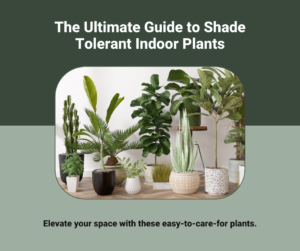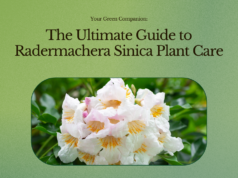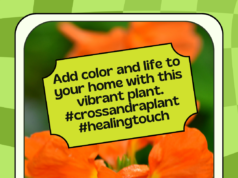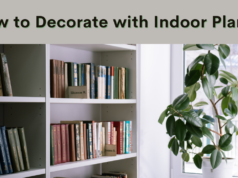
Do you have a space in your home or office that doesn’t receive much sunlight? Don’t worry, there are plenty of indoor plants that can thrive in low light conditions. Shade tolerant plants are the perfect solution to brighten up these areas and add some greenery to your space. In this comprehensive guide, we will explore the best shade tolerant plants for indoor spaces to help you create a lush and vibrant oasis, no matter the lighting situation.
From the elegant Peace Lily to the versatile Pothos, we’ve got you covered. Whether you’re a beginner or a seasoned plant enthusiast, these plants are easy to care for and will add some life to your indoor environment. So, let’s get started!
Key Takeaways:
- Shade tolerant plants can thrive in low light conditions, making them ideal for indoor spaces with limited natural light.
- Indoor shade tolerant plants are perfect for adding visual appeal and improving air quality in areas of your home or office that receive minimal natural light.
- When selecting shade tolerant plants for your indoor space, consider the amount of available light, humidity levels, and the care requirements of the plant.
- The Snake Plant, ZZ Plant, Pothos, Peace Lily, Chinese Evergreen, and Dracaena are some of the best shade tolerant plants for indoor spaces.
- With the right shade tolerant plants, you can create a lush and vibrant indoor oasis, even in areas with minimal natural light.
Understanding Shade Tolerance in Indoor Plants
If you’re looking for low light indoor plants, it’s important to understand what shade tolerance means. Many indoor plants require direct sunlight to thrive, but shade tolerant plants can survive and even flourish in low light conditions. These plants have adapted to minimal light by slowing down their growth rate and photosynthesis process.
Plants for low light conditions are ideal for indoor spaces with limited access to natural light. Some common examples of such spaces include offices, bathrooms, and basements. When choosing indoor plants that don’t need sunlight, shade tolerance is the key factor to consider.
Indoor plants that can tolerate shade are also known as low light plants. They typically have green, dark, or variegated leaves and can grow in environments with minimum light. Shade loving houseplants offer a wide range of options for those who want to brighten up their indoor space without direct sunlight.
Overall, low light tolerant indoor plants offer benefits such as air purification, stress relief, and aesthetic appeal. With proper care, you can enjoy a lush indoor garden even in areas with minimal natural light.
Tip: When placing indoor plants in low light conditions, make sure to rotate them regularly to ensure even growth and prevent leaning towards the light source.
Benefits of Shade Tolerant Plants for Indoor Spaces
Shade tolerant plants offer several benefits for indoor spaces. If you have limited access to natural light, these plants are perfect for adding some greenery to your space. Here are some of the advantages of having shade tolerant houseplants:
- Improved air quality: Indoor air can be more polluted than outdoor air. Shade tolerant indoor plants, such as the Peace Lily or Chinese Evergreen, can help remove toxins from the air, creating a healthier space for you.
- Visual appeal: Indoor plants are a great way to add color and character to your home or office. By choosing the best indoor plants for shade, you can add some beauty and vitality to even the darkest of rooms.
- Calming atmosphere: Studies have shown that indoor plants can reduce stress and anxiety levels. Having some shade tolerant plants in your space can help create a relaxing and rejuvenating environment.
Whether you’re looking to improve air quality, add some visual appeal, or simply enhance the ambiance of your indoor space, shade tolerant houseplants are a great choice.
Factors to Consider When Choosing Shade Tolerant Plants
When selecting shade tolerant plants for your indoor space, it’s important to consider a few factors to ensure your plants thrive and stay healthy. The following are some of the key factors you should keep in mind:
Amount of Available Light
The amount of available light is one of the most important factors to consider when choosing shade tolerant plants. While these plants don’t require direct sunlight, they still need some light to survive. When selecting plants, consider the amount of light that enters the room throughout the day and choose plants that are suitable for that level of light.
Humidity Levels
Humidity levels can also play a critical role in the health of indoor plants. While some plants prefer higher levels of humidity, others can thrive in drier conditions. It’s important to choose plants that match the humidity levels of your indoor space to ensure optimal growth.
Care Requirements
Each plant has its own set of care requirements. Some plants are low maintenance and require minimal care, while others require more frequent watering and feeding. Consider your own schedule and choose plants that match your ability to care for them.
By taking these factors into account, you can choose shade tolerant plants that will thrive in your indoor space. Here are some of the best low light plants for home and office settings:
- Pothos: This plant is easy to care for and can thrive in a variety of light conditions. It has trailing vines with heart-shaped leaves that come in various shades of green.
- Snake Plant: Also known as Sansevieria, this plant features long, upright leaves that come in different colors and patterns. The snake plant is known for its ability to purify the air and can thrive in low light conditions.
- ZZ Plant: The ZZ Plant, scientifically known as Zamioculcas zamiifolia, is highly durable and can tolerate low light conditions. It has glossy green leaves that add a touch of elegance to any indoor space.
- Peace Lily: This classic plant features dark green leaves and white flowers that bloom throughout the year. The Peace Lily is not only shade tolerant but also known for its ability to improve air quality.
- Chinese Evergreen: This plant is known for its vibrant foliage and can tolerate low light conditions. It has variegated leaves in shades of green, silver, and even red.
- Dracaena: Dracaena plants come in a wide variety of shapes, sizes, and colors. They are highly adaptable and can tolerate low light conditions.
By keeping these factors and plant options in mind, you can create a beautiful indoor garden even in low light conditions. Choose the plants that suit your indoor space and enjoy the many benefits of a lush, green environment.
Top Shade Tolerant Plants for Indoor Spaces
If you’re looking to add some greenery to your indoor space but don’t have access to much natural light, you might feel limited in your options. However, there are plenty of plants that can survive in shade and are perfect for those dark corners or rooms. Here are some of the best houseplants for dark rooms:
| Plant Name | Description |
|---|---|
| Snake Plant (Sansevieria) | The Snake Plant is a popular choice for indoor spaces with limited sunlight. It has long, upright leaves that come in a variety of colors and patterns. |
| ZZ Plant (Zamioculcas zamiifolia) | The ZZ Plant has glossy green leaves that add a touch of elegance to any indoor space. This plant is highly durable and can tolerate low light conditions. |
| Pothos (Epipremnum aureum) | The Pothos plant has trailing vines with heart-shaped leaves that come in various shades of green. Pothos can thrive in low light areas and is known for its air-purifying qualities. |
| Peace Lily (Spathiphyllum) | The Peace Lily is a classic choice for indoor spaces with limited sunlight. It features dark green leaves and elegant white flowers that bloom throughout the year. This plant is not only shade tolerant but also known for its ability to improve air quality. |
| Chinese Evergreen (Aglaonema) | The Chinese Evergreen has variegated leaves in shades of green, silver, and even red. This plant is perfect for adding a pop of color to your indoor space without much sunlight. |
| Dracaena (Dracaena spp.) | Dracaena plants come in a wide variety of shapes, sizes, and colors. They are highly adaptable and can tolerate low light conditions. With their striking foliage, these plants can make a bold statement in any indoor space. |
These low light tolerant plants are not only beautiful, but also offer numerous benefits for your indoor space. They can improve air quality, reduce stress levels, and even boost productivity. So, don’t let limited sunlight hold you back from creating your own indoor oasis. With these shade tolerant houseplants, you can brighten up any room and enjoy the beauty of nature indoors.
Snake Plant (Sansevieria)
If you’re looking for an indoor plant that can thrive in indirect sunlight or low light conditions, the Snake Plant is a perfect choice. This shade-loving plant features long, upright leaves that come in a variety of colors and patterns, making it a popular choice for any indoor space. In addition to its visual appeal, the Snake Plant is also known for its air-purifying qualities, making it an excellent addition to your home or office.
One of the benefits of the Snake Plant is its hardiness. It is highly adaptable and can tolerate a range of indoor environments, from bright indirect light to low light conditions. This makes it an excellent choice for beginners or those with limited experience caring for indoor plants.
Another benefit of the Snake Plant is its low maintenance requirements. It does not require frequent watering and can survive in a range of temperatures and humidity levels. This means you can enjoy the beauty of this plant with minimal effort.
Additional Care Tips for Snake Plant
While the Snake Plant is relatively easy to care for, there are a few tips to keep in mind to help it thrive:
- Water the plant sparingly, allowing the soil to dry out completely between waterings.
- Avoid placing the plant in direct sunlight, as this can damage the leaves.
- Provide well-draining soil and a pot with drainage holes to prevent root rot.
- Keep the plant away from cold drafts or air conditioning vents, as this can cause its leaves to wilt.
By following these care tips, you can ensure that your Snake Plant remains healthy and vibrant for years to come.
Pro Tip: The Snake Plant is known to improve air quality by removing toxins from the air. Place it in your bedroom for a better night’s sleep!
ZZ Plant (Zamioculcas zamiifolia)
If you’re looking for the perfect shade tolerant plant for your indoor space, the ZZ Plant is an excellent option to consider. This plant, scientifically known as Zamioculcas zamiifolia, is a sturdy and easy-to-grow plant, which can add natural beauty and style to your office or home.
The ZZ Plant is native to eastern Africa, and it’s well known for its glossy green leaves that add elegance to any indoor space. Interestingly, these leaves are also slightly waxy, which makes them resistant to pests and diseases. Furthermore, this plant is highly durable and can tolerate low light conditions, making it an excellent candidate for offices or rooms that get a limited amount of sunlight.
One of the best features of the ZZ Plant is that it doesn’t require much care, which means it’s perfect for those who don’t have a green thumb or don’t have enough time to dedicate to plant care. The ZZ Plant only needs to be watered every two to three weeks, and it prefers to be in a well-draining potting mix.
Overall, the ZZ Plant is an excellent choice for those looking for indoor plants that tolerate shade. It’s low maintenance, resilient, and visually appealing, making it an ideal indoor plant for any low light area in your home or office.
Pothos (Epipremnum Aureum)
Pothos, scientifically known as Epipremnum aureum, is a versatile and easy-to-grow option for shade tolerant indoor plants. It has trailing vines with heart-shaped leaves that come in various shades of green. Pothos can thrive in low-light areas and is known for its air-purifying qualities.
This plant is perfect for those who want to brighten up their space without much sunlight. It can be placed on a shelf or hung from a wall for an eye-catching display.
“Pothos is a great option for those who want a plant that can survive in low-light areas. It’s also incredibly easy to care for and can grow quite quickly, making it perfect for those who are new to indoor gardening.”
When caring for Pothos, it’s important to keep the soil slightly moist and to avoid overwatering. This plant does well in temperatures between 60-85°F (16-29°C) and can tolerate low humidity levels.
List of Care Tips for Pothos:
- Place in a low-light area.
- Water when the top inch of soil is dry.
- Use well-draining soil.
- Keep in temperatures between 60-85°F (16-29°C).
- Feed with a balanced fertilizer every 2-3 months.
- Prune regularly to encourage bushier growth.
Overall, Pothos is a great shade tolerant plant for your indoor space. It’s easy to care for, can tolerate low-light areas, and adds a touch of greenery to any room.
Peace Lily (Spathiphyllum)
If you’re looking for indoor plants that don’t need much light, Peace Lily is an excellent option. This plant is a popular choice for its gorgeous dark green leaves and elegant white flowers that bloom throughout the year. Not only that, but Peace Lily is also a shade loving houseplant that can tolerate low light conditions. It can even improve the air quality in your home or office, making it one of the best indoor plants for low light conditions.
| Lighting | Low to medium |
|---|---|
| Watering | Keep soil moist, but not soaked |
| Humidity | Moderate to high |
Peace Lily is a low maintenance plant that requires minimal care and attention. It prefers moderate to high humidity levels, so consider placing a small humidifier near the plant or misting it with water regularly. Ensure that the soil is kept moist, but not waterlogged, as this can lead to root rot. With proper care, your Peace Lily can thrive in even the darkest corners of your home or office.
“Peace Lilies are one of the best indoor plants for low light conditions. They are also great for improving air quality in your space.”
Chinese Evergreen (Aglaonema)
If you are looking for a low light tolerant indoor plant that is also visually appealing, the Chinese Evergreen (Aglaonema) is an excellent option. With its variegated leaves in shades of green, silver, and even red, this plant can brighten up any corner of your indoor space. In addition to its aesthetic value, the Chinese Evergreen is also known for its shade tolerance, making it perfect for low light indoor environments.
This plant is easy to care for and can adapt to a range of indoor temperatures. It is also a great air purifier, removing toxins from the air and improving the overall air quality of your indoor environment. With its low light requirements and beautiful foliage, the Chinese Evergreen is a must-have for any indoor garden.
Low Light Indoor Plant Options
When it comes to low light indoor plants, the Chinese Evergreen is just one of many options to choose from. Other popular low light indoor plants include the Snake Plant, ZZ Plant, Pothos, and Dracaena. These plants can all thrive in environments with minimal natural light, making them great choices for offices or dark indoor spaces.
Shade Tolerant Indoor Flowers
If you are looking for shade tolerant indoor flowers, the Chinese Evergreen may not be the best option. While it does produce small white flowers, they are not as visually stunning as other indoor flowers that require more sunlight, such as the African Violet or the Peace Lily. However, with its vibrant foliage and low light adaptability, the Chinese Evergreen can still add a pop of color and natural beauty to your indoor space.
Dracaena (Dracaena spp.)
If you’re looking for an indoor plant that can tolerate shade, Dracaena plants are a great choice. These plants come in a wide variety of shapes, sizes, and colors, making them a popular choice among indoor gardeners.
Dracaena plants are known for their ability to thrive in low light conditions. They can be placed in areas of your home or office that receive minimal natural light and still grow and flourish. With their striking foliage, these plants can add a bold statement to your indoor space without relying on direct sunlight.
One of the most popular varieties of Dracaena is the “Corn Plant” (Dracaena fragrans), which features tall stalks with broad green leaves. Other popular varieties include the “Dragon Plant” (Dracaena marginata) with its red-edged leaves and the “Lucky Bamboo” (Dracaena sanderiana) with its distinctive bamboo-like appearance.
Dracaena Care Tips
Dracaena plants are relatively easy to care for and can thrive in a variety of indoor environments. Here are some tips to keep your Dracaena healthy and happy:
- Water your Dracaena once a week, allowing the soil to dry out between watering sessions.
- Place your Dracaena in indirect sunlight or low light conditions.
- Keep your Dracaena in a room with a temperature between 60-75°F.
- Fertilize your Dracaena every 2-3 months with a balanced liquid houseplant fertilizer.
- If your Dracaena starts to outgrow its pot, transplant it to a larger container with fresh potting soil.
By following these care tips, you can ensure that your Dracaena remains healthy and thriving in your indoor space for years to come.
Overall, Dracaena plants are an excellent option for those looking for shade tolerant plants for indoor spaces. Their vibrant foliage and ability to thrive in low light conditions make them a popular choice among indoor gardeners. Consider adding one of these stunning plants to your indoor space today!
FAQ
What are shade tolerant plants?
Shade tolerant plants are able to thrive in low light conditions and do not require direct sunlight. They have adapted to survive and grow under minimal light, making them ideal for indoor spaces with limited sunlight.
Why should I choose shade tolerant plants for my indoor space?
Shade tolerant plants offer several benefits for indoor spaces. They not only add visual appeal and help create a calming atmosphere, but they also improve air quality by removing toxins from the air. Additionally, these plants can thrive in areas of your home or office that receive minimal natural light, such as dark rooms or corners.
What factors should I consider when choosing shade tolerant plants?
When selecting shade tolerant plants for your indoor space, there are a few factors to consider. These include the amount of available light, humidity levels, and the overall care requirements of the plant. By taking these factors into account, you can choose plants that will thrive in your specific environment.
What are some top shade tolerant plants for indoor spaces?
Some of the best shade tolerant plants for indoor spaces include the Snake Plant (Sansevieria), ZZ Plant (Zamioculcas zamiifolia), Pothos (Epipremnum aureum), Peace Lily (Spathiphyllum), Chinese Evergreen (Aglaonema), and Dracaena (Dracaena spp.). These plants have been carefully selected based on their ability to thrive in low light conditions and their visual appeal.
How do I care for shade tolerant plants?
Shade tolerant plants generally require less sunlight, but they still need some level of light to survive. Place them in areas that receive indirect or filtered sunlight, and avoid exposing them to harsh, direct sunlight. Additionally, be mindful of their watering needs and provide appropriate moisture levels based on the specific plant’s care instructions.
Can shade tolerant plants survive in dark rooms?
Yes, many shade tolerant plants can survive in dark rooms. However, it’s important to note that no plant can thrive in complete darkness. Even in dark rooms, there is typically some ambient light that can sustain low light plants. Ensure that the plants receive some degree of indirect or filtered light for their growth and development.
Do shade tolerant plants require any special care?
Shade tolerant plants generally require less maintenance compared to plants that thrive in direct sunlight. However, it’s still important to provide them with the appropriate care to ensure their well-being. This includes regular watering, monitoring humidity levels, and occasionally fertilizing the plants according to their specific care requirements.
Can shade tolerant plants be grown in offices?
Yes, shade tolerant plants are perfect for offices with limited access to natural light. They can brighten up the space and improve air quality, making them an excellent choice for indoor environments. Just make sure to choose plants that can tolerate the specific lighting conditions in your office.
Do shade tolerant plants have any health benefits?
Absolutely! Shade tolerant plants, like all indoor plants, offer several health benefits. They can improve indoor air quality by removing toxins and pollutants from the air. Additionally, having plants in your space has been shown to reduce stress levels, boost mood, and increase productivity.
Can I mix shade tolerant plants with other indoor plants?
Yes, you can mix shade tolerant plants with other indoor plants to create a diverse and visually appealing indoor garden. Just make sure to consider the different light requirements of each plant and place them accordingly in your indoor space. Grouping plants with similar light needs together can help ensure they all receive the appropriate amount of light.
Conclusion
If you’re looking to add some greenery to your indoor space but have limited access to natural light, shade tolerant plants are a great option. These plants are able to thrive in low-light environments and can add visual appeal to your home or office. Not only that, but they also offer health benefits by improving air quality.
Some of the best plants for low light include the Snake Plant, ZZ Plant, Pothos, Peace Lily, Chinese Evergreen, and Dracaena. These low light tolerant indoor plants are easy to care for and come in a variety of sizes, shapes, and colors. Whatever your personal style, there’s a shade tolerant plant that can fit your needs.
So if you’ve been struggling to find indoor plants that can survive in low-light environments, don’t worry. You can still enjoy the benefits of greenery by incorporating these best plants for low light into your home or office. Start creating your own indoor oasis today!
















